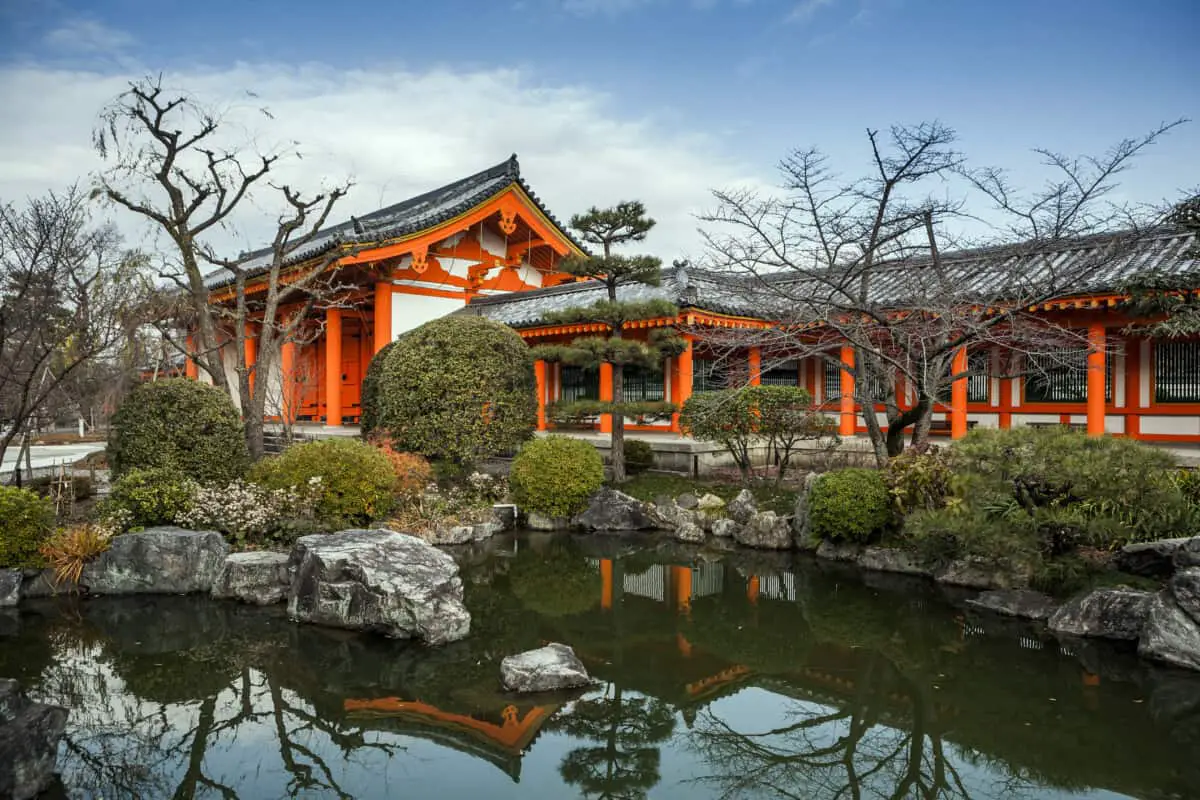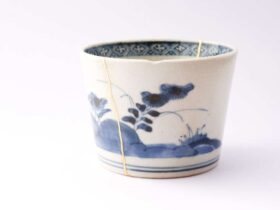Located on the east side of Kyoto is the Sanjūsangen-Dō Temple. It’s an unmistakable sight with a bright orange exterior. It’s home to 1,001 statues of the Buddhist goddess of mercy, Kannon. But it was once the retirement palace for a shogun emperor and the site of an impressive archery contest.
Kannon, although connected heavily with Buddhism, is non-denominational. She is an entity that anyone can love, respect, admire and look to for salvation. Sanjūsangen-Dō Temple is her main center of worship.
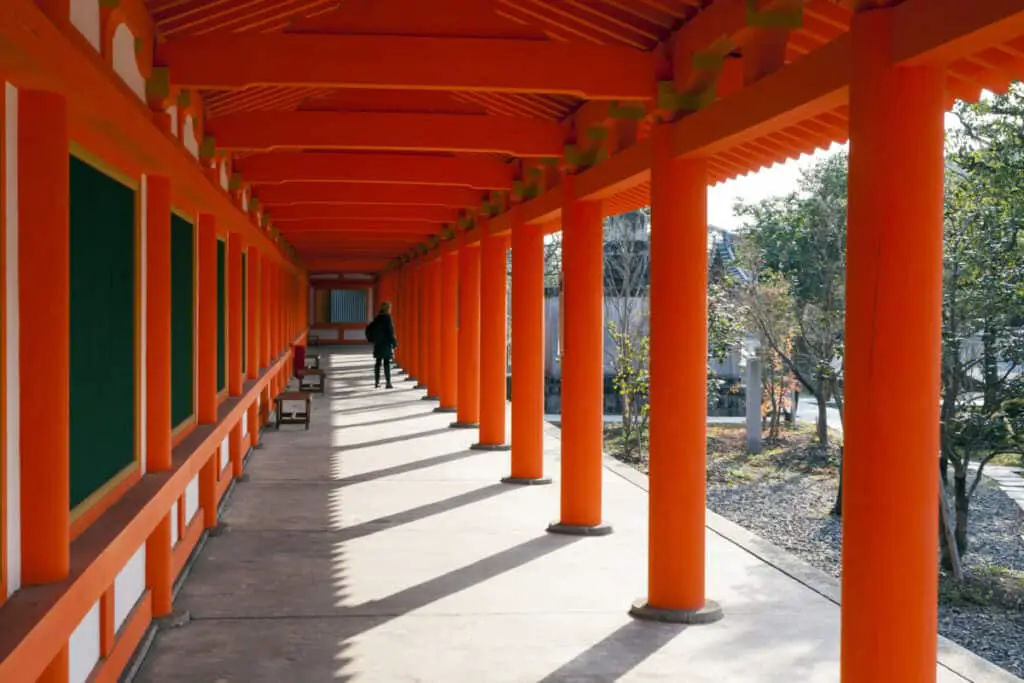
Temple Overview
- About Sanjūsangen-Dō Temple
- History of Sanjūsangen-Dō Temple
- Tōshiya, an Archery Competition
- Impressive Statistics
- Tōshiya, an Archery Competition
- Sanjūsangen-Dō Temple Today
- The Yosegi Carving Technique
- Statue Arrangements
- One Massive Statue of Kannon
- 28 Additional Guardian Deities
- Sacred Willow Trees
- Kannon’s Origin Story
- Avalokitesvara
- Export to China and Beyond
- Kannon’s Power ; Purpose
- Associations ; Sacred Symbols
About Sanjūsangen-Dō Temple
The name Sanjūsangen-Dō (三十三間堂) translates to either “Hall with 33 intervals” or “Hall with 33 Spaces between the Columns.”
Thirty-three is an important number as it refers to Kannon’s 33 different incarnations. Indeed, there’s a total of 33 temples in dedication to Kannon throughout Japan.
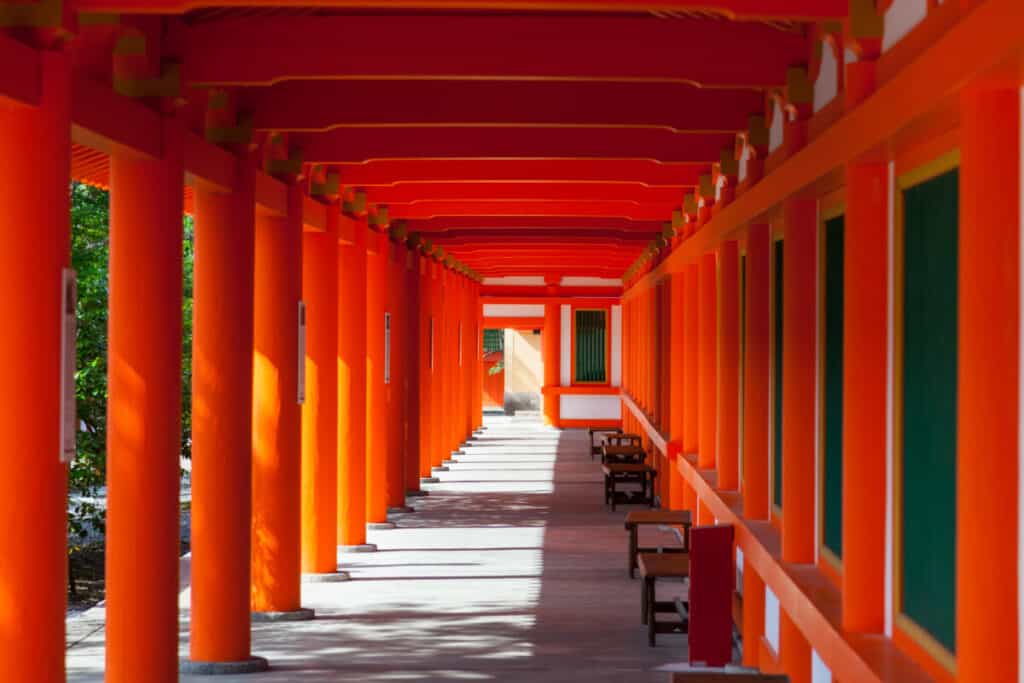
Built in 1162 during the late Heian Period, Sanjūsangen-Dō Temple came into existence on the order of Emperor Go-Shirakawa.
This was to be his retirement palace once he abdicated the throne and performed under the direction of the famous warlord, Taira no Kiyomori.
History of Sanjūsangen-Dō Temple
In 1249, the complex burned down along with many of the statues inside. It didn’t undergo reconstruction efforts until 1266.
Even then they only reconstructed the main hall, by order of Emperor Go-Saga. The reconstructed hall measures 33 ken, or just over 3¼ feet (120 meters) long.
Tōshiya, an Archery Competition
During the Momoyama Period (1583–1600), Sanjūsangen-Dō was the seat of a nationwide archery contest known as Tōshiya.
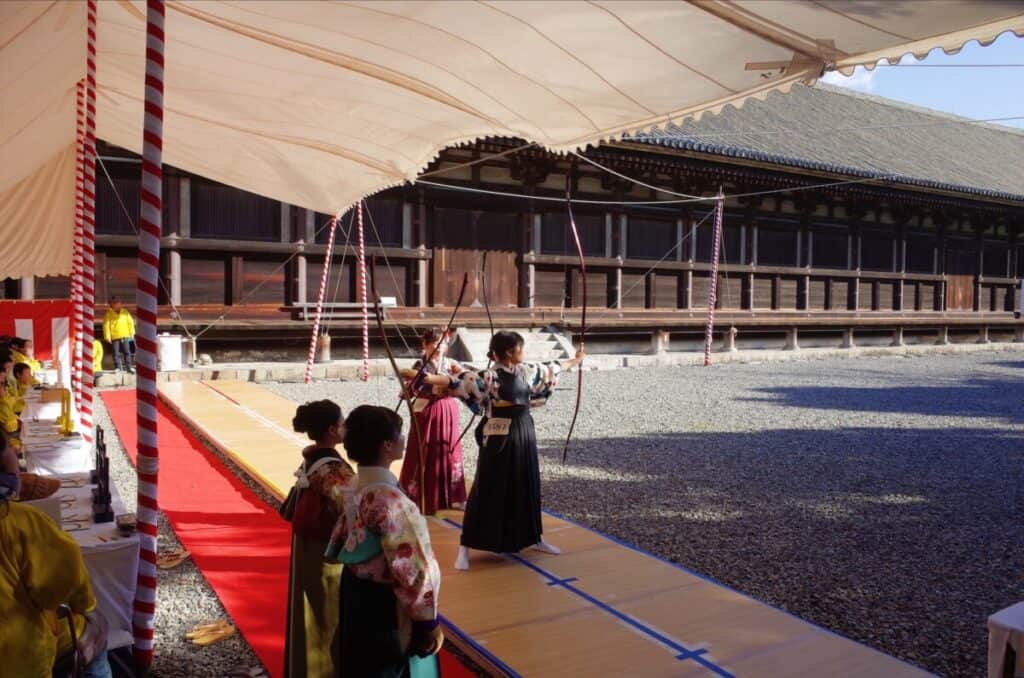
The accepted theory is that Asaoka Heibei, a famous shogun warrior, popularized the contest in 1606 after shooting 51 arrows perfectly into their target.
The contest involved several challenge categories that included 100 Shots and 1,000 shots. Children had 12 hours to complete their challenges while adults had 24.
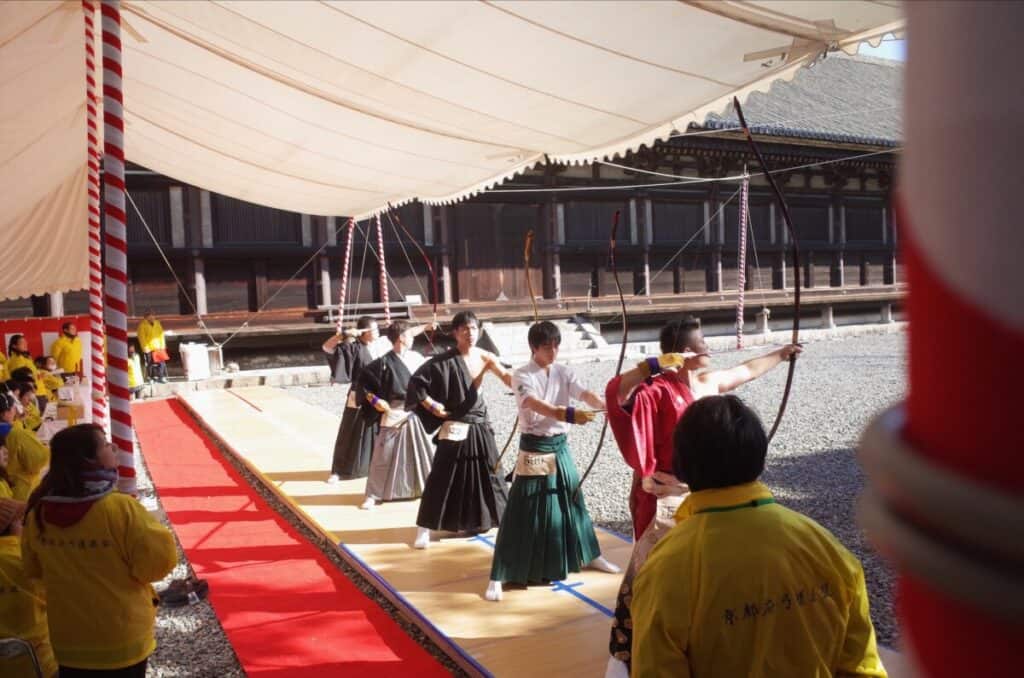
Whoever made the most successful hits would win. They would do this within the length of the hall, setting up a target at the north end while shooting from the south.
Impressive Statistics
The temple splays with wooden certificates listing the champions by their name along with their age and types of arrows used.
There are some impressive statistics to note as well. For instance, in 1827 an 11-year-old hit his target with 995 out of 1,000 arrows. But, the competitions ended in 1861 after 255 years.
The archery competition isn’t the same as its former glory but it still echoes its existence in the modern era during the Coming of Age Day in mid-January.
Both boys and girls compete as part of their initiation into adulthood.
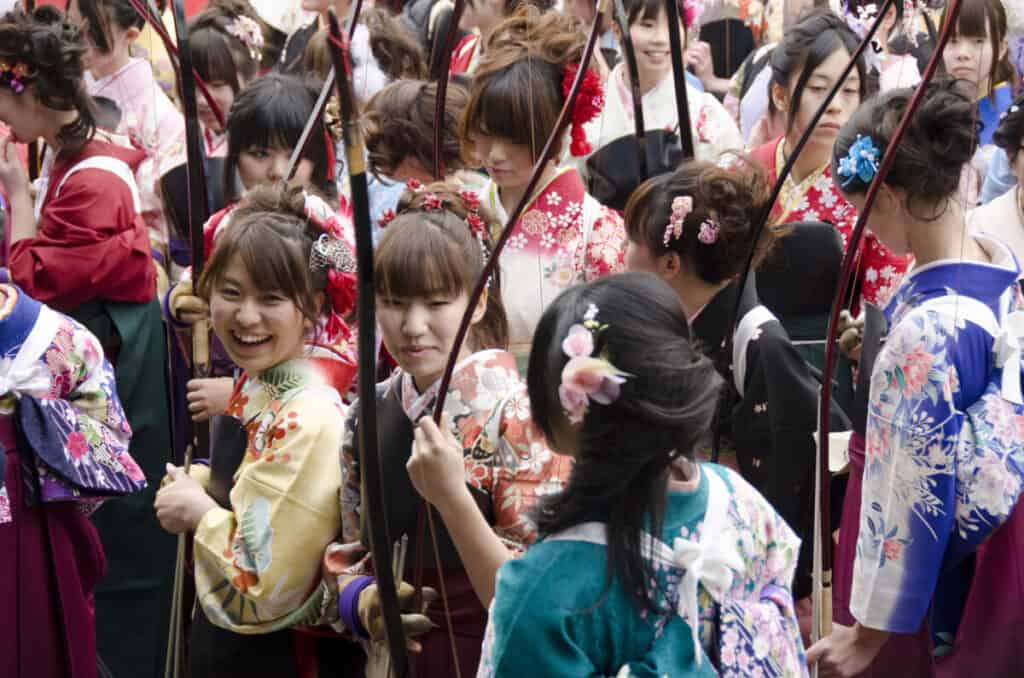
sanjusangendo 3 Today
Today, Myōhō-in Temple manages the Sanjūsangen-Dō and it comes under the tutelage of the Tendai School of Buddhism. The most prolific aspect is the statuary housing 1,001 human-sized sculptures of one of Buddhism’s most beloved goddesses, Kannon.
These represent Kannon’s unconditional mercy and power as an alleviator of suffering, hardship, misfortune, and bad luck.
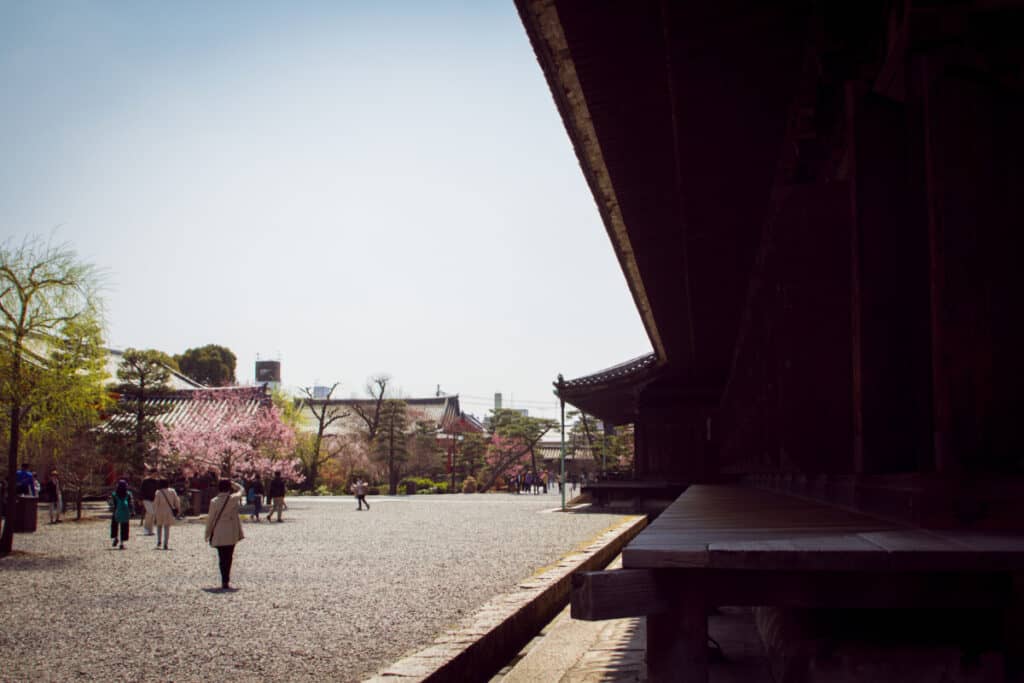
One hundred twenty-four are the original statues saved from the 1249 fire but date back to sometime around 300 or 500 AD. The rest are replacements created in the 13th century.
The statues have only 42 arms each and help guide Kannon in her mission for mercy upon humankind. When you subtract the two regular arms and multiply them by the 25 Buddhist planes of existence, this equals 1,000.
Sanjusangen Temple Official Website
The Yosegi Carving Technique
They rest in the main hall and each holds different items or has a particular symbolic pose or gesture commonplace in Buddhism.
They are each 167 cm tall. Crafted by a team of master sculptors led by a father-son pair named Unkei and Tankei, they used a carving technique called yosegi.
This technique is what allowed so many craftsmen to work on a single statue simultaneously. First, they would fit together blocks of hollow wood with a subsequent rough carving.
Then the images would undergo more refined carving and finally lacquered for the ultimate in preservation.
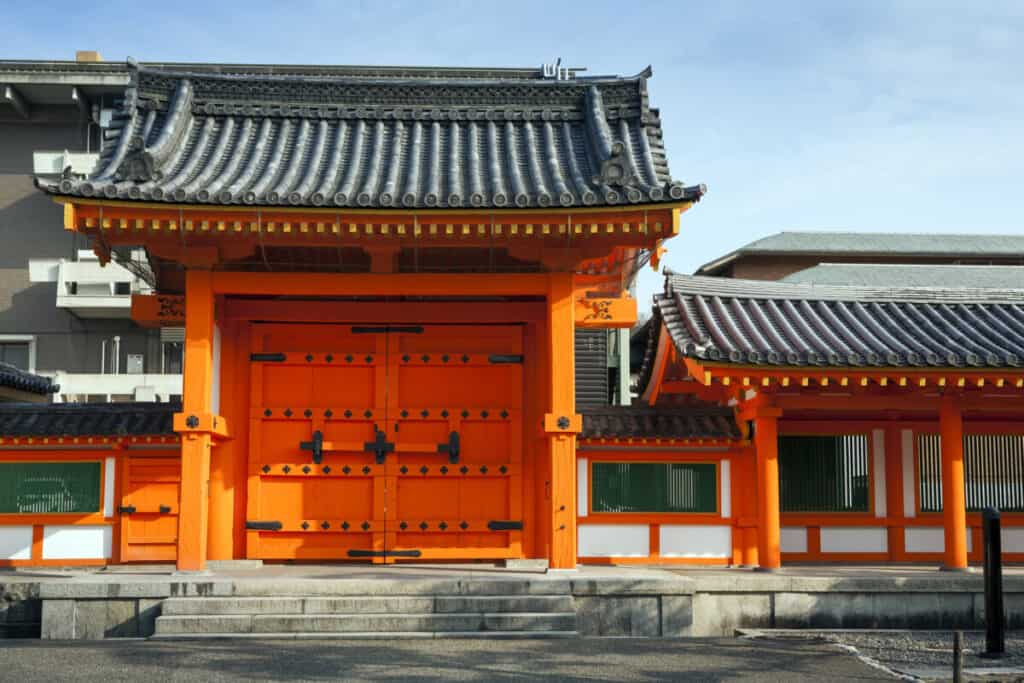
Statue Arrangements
The statues arrange in 50 columns within 10 rows and comprise Japanese Cypress wood, covered in gold leaf.
They flank a massive statue of Kannon, which is the prime object of worship among priests, laypeople, and pilgrims.
One Massive Statue of Kannon
This larger statue of Kannon is officially a National Treasure. She has 1,000 arms and 11 heads so she may witness the whole of human suffering and save those who need it.
Kannon stands almost 11 feet (3.3 meters) tall and she sits upon a throne with crystals for eyes.
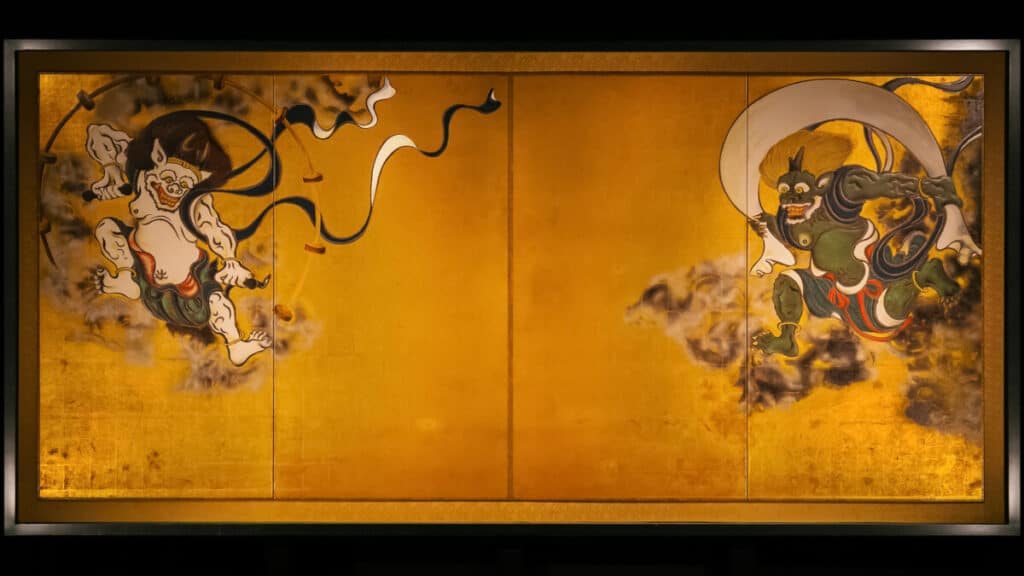
Behind her are two gods of the sky: Fujin of the wind and Raijin of the thunder. Raijin is nearly 11½ feet (3.5 meters) tall and carries circular drums by which he creates thunder. Fujin is 12½ feet (3.8 meters) tall.
28 Additional Guardian Deities
There are also 28 guardian deities in the statuary that are not Japanese in origin, they’re Hindu. These include Shiva, Vishnu, Lakshmi, Brahma, and others that serve to protect Kannon in her Japanese home.
The reason why these Hindu deities reside here is to reflect back to Kannon’s roots as the Hindu deity, Avalokitesvara.
Sacred Willow Trees
Around the grounds of Sanjūsangen-Dō Temple are hundreds of willow trees.
Their long, hair-like branches hang low to the ground and are an important component of the temple’s annual celebration, the Rite of the Willow.
This mainly stems from the fact that the willow tree is sacred to Kannon.
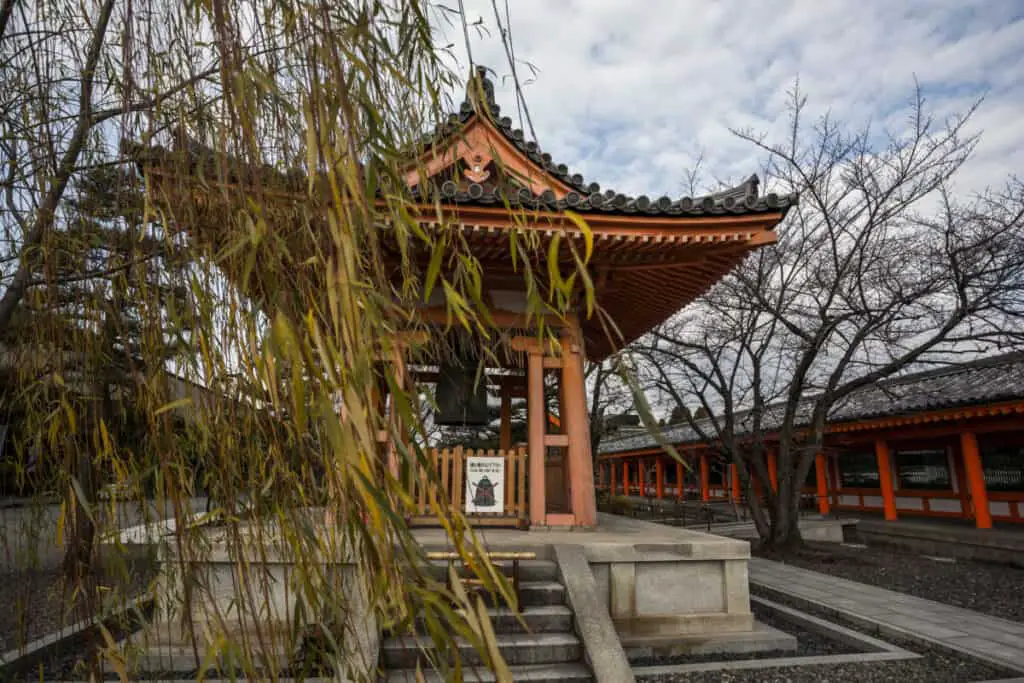
The branches purify and cure people while also acting as protective charms. Such things ward off headaches and induce healing from disease.
Indeed, willow has the main ingredient found in aspirin, acetaminophen.
Kannon’s Origin Story
Kannon has an interesting back story that’s integral to her worship in Japan.
Originally, Kannon was a Hindu male deity called Avalokitesvara (pronounced avah-low-key-tesh-vah-rah) from the 1st or 2nd century AD. His name translates to “Lord Who Regards All.”
Avalokitesvara
Avalokitesvara was the picture of mercy and compassion, saving people from disgrace, starvation, and destitution.
His essence was kindness and generosity while teaching his devotees to emanate his presence among humankind.
Export to China and Beyond
This deity has deep links to the beginnings of Buddhism in India. But, for some reason, Buddhism completely left India and was grandfathered into Chinese culture.
However, the Chinese found it difficult to accept a male being the symbol of mercy, kindness, and compassion.
So, at some point, Avalokitesvara’s name and gender changed into Kwan-Yin, goddess of mercy.
She became so popular throughout China her worship spread to places like Vietnam, Korea, and Japan. In Japanese, Kannon’s name means “One Who Observes the Sounds of the World.”
Kannon’s Power and Purpose
Her protection comes to those who call her name as many times as they can in the face of danger.
Legend has it that if someone is attacking you and you say Kannon’s name often and fast, not only will the attacker stop his pursuit, but he will also convert to a kinder mode of being.
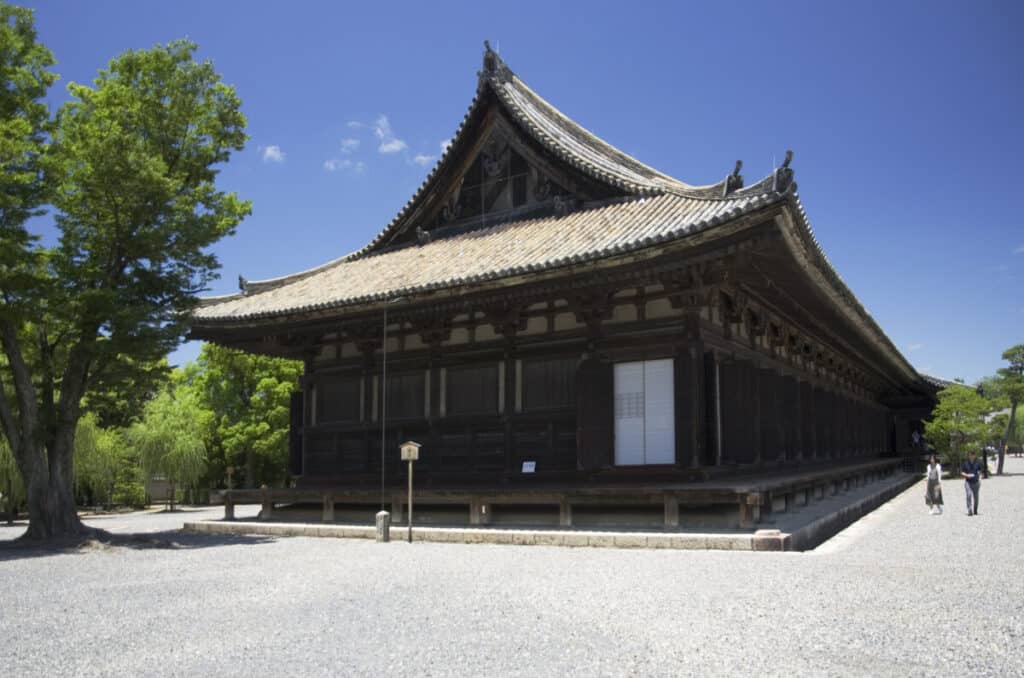
She bestows mercy, blessings, and miracles upon those who seek her wisdom and favor. Kannon protects pets, children, sailors, and rules over water.
Indeed, many images show her with a vessel pouring out the waters of compassion upon humanity.
Associations and Sacred Symbols
The willow tree and the peach are sacred to her as are the peacock and the moon. It’s said that she was able to study by moonlight under the nourishment of eating a peach.
She, therefore, has associations with money, education, and intelligence.
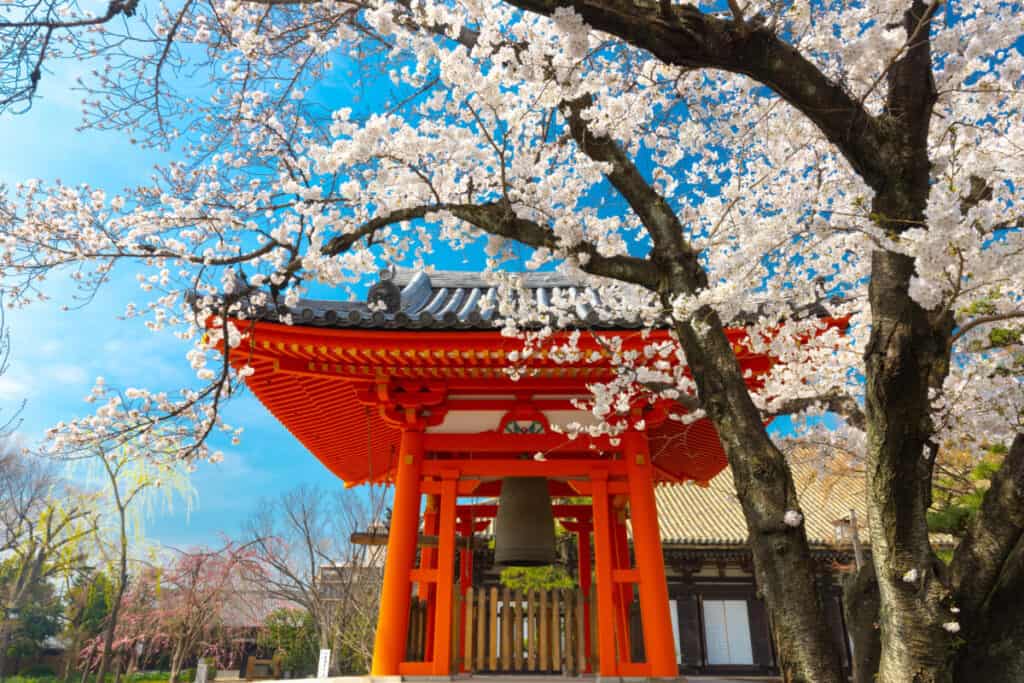
People from Western cultures and those who are Christian can liken Kannon to that of the Virgin Mary. In fact, Kannon provided a cover to Christian worshippers during the Edo Period, which allowed them to practice their religion and read the Bible in secret.
She has 33 manifestations in the physical world, all of which are symbols found within each of her 33 pilgrimage temples across Japan. She can be male or female as well as an animal, plant, or element.

